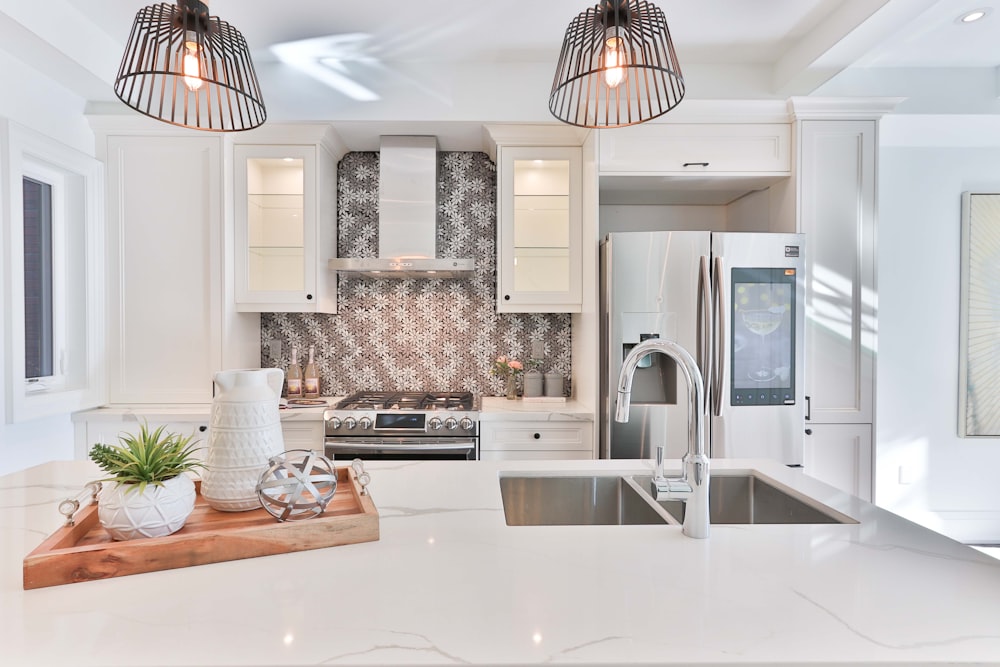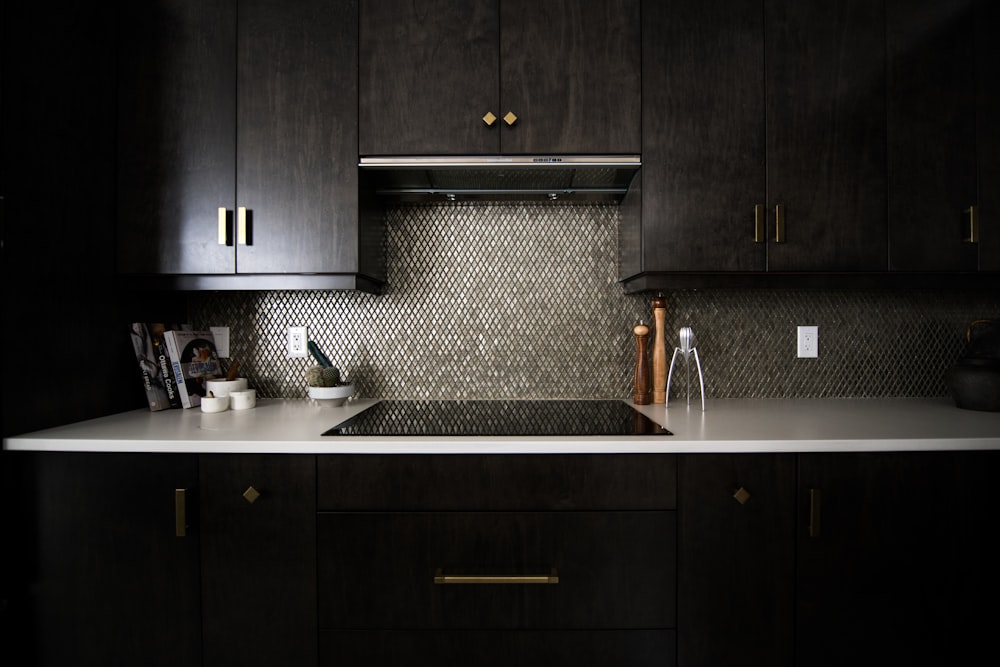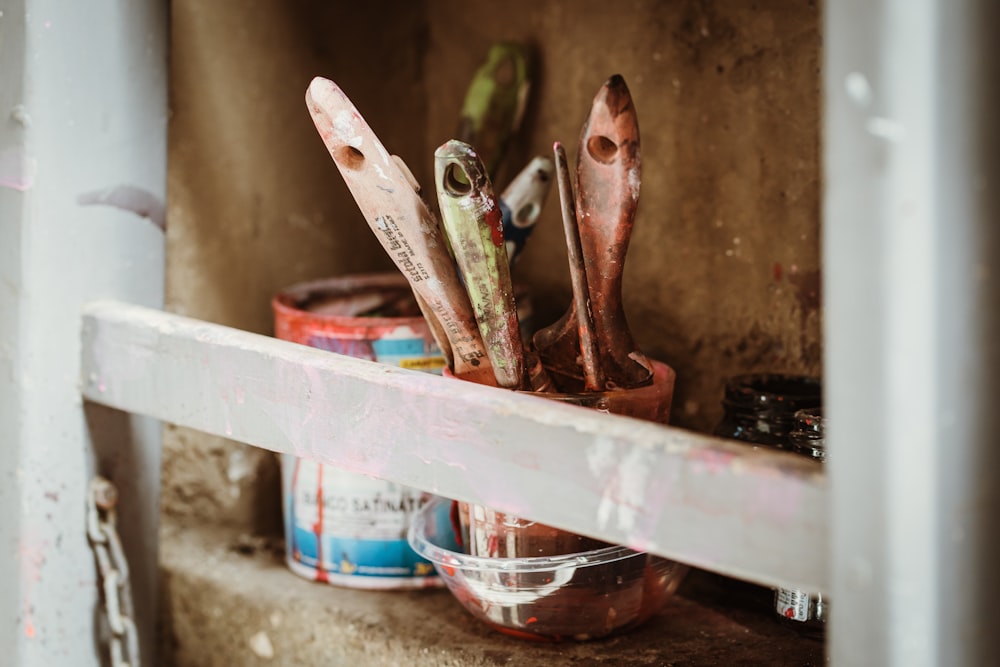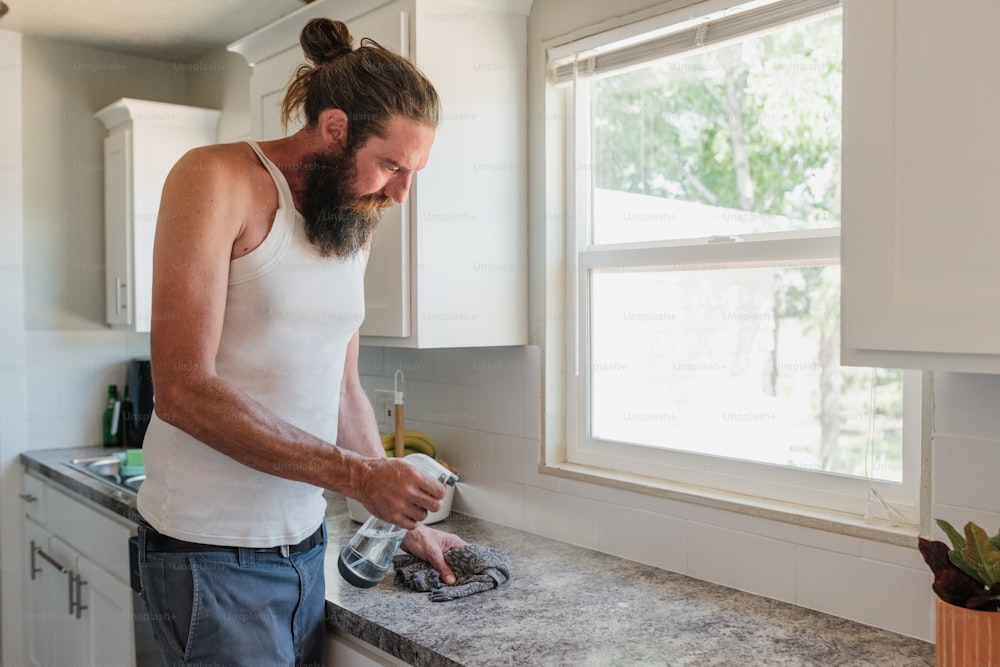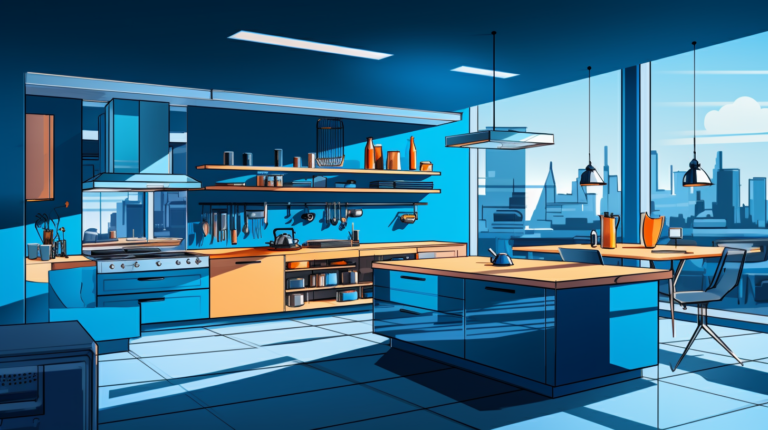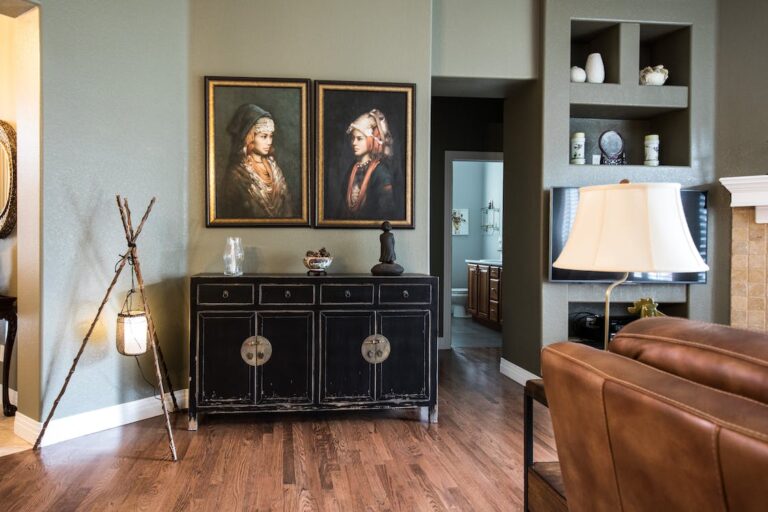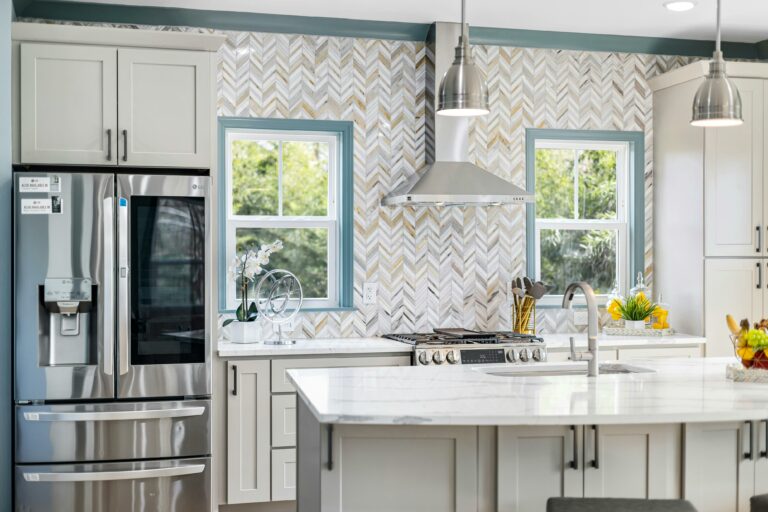Color Ideas to Try : Transform Your Kitchen with a Fresh Coat of Paint in 2023
Welcome to “Transform Your Kitchen with a Fresh Coat of Paint: Color Ideas to Try”! Your kitchen is not just a place where you prepare meals; it’s the heart of your home, where family gathers and memories are made. So why not give it a fresh new look that reflects your style and personality? One of the easiest and most cost-effective ways to transform your kitchen is by painting it.
In this article, we will explore different color palettes, popular kitchen color trends, options for accent walls or full room transformations, painting techniques and finishes, preparation and painting tips, as well as maintaining and refreshing your new kitchen paint. Get ready to be inspired and discover exciting ideas to breathe new life into your kitchen!
Whether you prefer a classic, timeless look or want to embrace the latest trends, there are endless possibilities when it comes to choosing the right color for your kitchen. But before we dive into specific color ideas, let’s consider a few important factors that can help influence your decision.
Are you excited? Let’s get started by discussing the key elements in choosing the right color palette for your kitchen makeover.
Table of Contents
Choosing the Right Color Palette
When it comes to transforming your kitchen with a fresh coat of paint, choosing the right color palette is crucial. The colors you select will set the tone and mood of the space, so it’s important to carefully consider your options. Here are some tips to help you choose the perfect colors for your kitchen:
Consider Your Kitchen Style
Before diving into color options, take a moment to think about the overall style of your kitchen. Is it traditional, modern, farmhouse, or something else? The style of your kitchen can provide valuable guidance in selecting the right colors. For example, if you have a modern kitchen with sleek lines and minimalist design, you may want to consider a monochromatic color scheme with bold accents. On the other hand, if your kitchen has a rustic farmhouse vibe, earthy and warm tones may be more appropriate.
Evaluate Natural Lighting
Natural lighting plays a significant role in how colors appear in a space. Take note of the amount and direction of natural light in your kitchen. Does it have large windows that flood the room with sunlight, or is it a bit dimmer? Keep in mind that colors can look different under various lighting conditions. To get an accurate sense of how a color will look in your kitchen, bring home paint samples and observe them in different parts of the room at different times of the day.
Think About the Mood
Consider the mood you want to create in your kitchen. Different colors evoke different emotions, so think about the atmosphere you want to achieve. Here are a few general associations with colors:
- Blue: Calmness, tranquility
- Yellow: Energy, happiness
- Green: Freshness, harmony
- Red: Passion, boldness
- Gray: Sophistication, neutrality
Of course, these associations can vary depending on shade and intensity, so always consider the specific hue you’re interested in. It’s also worth noting that while bright, vibrant colors can add a pop of excitement to your kitchen, they may overpower the space if used excessively. Use bold colors as accents or in small doses to create visual interest without overwhelming the room.
By considering your kitchen style, evaluating natural lighting, and thinking about the mood you want to create, you can confidently choose the right color palette for your kitchen. Remember, at the end of the day, it’s your space, so don’t be afraid to experiment with colors that resonate with you and make you feel at home.
Color Ideas to try in Popular Kitchen Trends
When it comes to transforming your kitchen with a fresh coat of paint, choosing the right color is essential. It sets the tone for the entire space and can instantly update the look and feel. If you’re looking for some inspiration, here are some popular kitchen color trends to consider:
Neutral Shades for a Timeless Look
Neutral colors have always been a popular choice for kitchens, and for good reason. They provide a timeless and versatile backdrop that can complement any style of kitchen. From crisp whites and creamy off-whites to warm greiges and soft beiges, neutral shades create a clean and fresh ambiance that never goes out of style. They also allow you to easily change up the decor and accessories without worrying about clashing colors.
Bold and Vibrant Colors for a Modern Twist
If you’re not afraid to make a statement, bold and vibrant colors can bring a modern and energetic vibe to your kitchen. Think deep blues, vivid greens, rich reds, or even sunny yellows. These colors can be used as accent walls or as the main color for your cabinets or island. Pair them with sleek and minimalist design elements to create a striking and contemporary look.
Soft Pastels for a Subtle and Serene Ambiance
For a more subtle and serene ambiance, soft pastel colors are a fantastic option. They create a light and airy atmosphere that is perfect for a cozy and inviting kitchen. Consider muted shades of pale pink, light blue, mint green, or lavender. These colors work well in both traditional and modern kitchens and can be easily paired with neutral accents for a balanced and calming effect.
When choosing a color for your kitchen, it’s important to consider the size of the space, the amount of natural light, and the overall mood you want to create. Bold colors can add drama and personality, while neutral or pastel shades can create a more timeless and soothing atmosphere. Ultimately, choose a color that reflects your personal style and makes you feel happy and inspired in your kitchen.
Tip: Don’t be afraid to test out different colors by applying paint samples to the walls or cabinets. This will give you a better idea of how the color looks in your specific space and lighting conditions before committing to a full paint job.
Accent Wall or Full Room
When it comes to transforming your kitchen with a fresh coat of paint, you have the option of either creating an accent wall or painting the entire room. Both choices can have a significant impact on the overall look and feel of your kitchen. Here are some things to consider when deciding between an accent wall or a full room paint job:
Creating a Focal Point with an Accent Wall
- What is an accent wall? An accent wall is a single wall in a room that is painted or treated differently from the others. It is often used as a focal point to draw attention to a certain area or feature.
- Why choose an accent wall? Accent walls can add visual interest and depth to your kitchen. They are a great way to highlight architectural features like a fireplace or a built-in shelf. They can also be used to showcase a piece of artwork or a collection of dishes.
- Color coordination: When selecting the color for your accent wall, consider choosing a hue that complements the rest of your kitchen. You can go for a bolder, contrasting color or a shade that is slightly darker or lighter than the surrounding walls.
- Placement: It’s important to choose the right wall for your accent wall. Consider the focal point you want to create and select a wall that will enhance it. For example, if you have a large window with a beautiful view, painting the wall behind it as an accent wall can help frame the view and make it a focal point.
Full Room Color Transformation
- Why choose a full room paint job? If you want to completely transform the look of your kitchen, painting the entire room is a great option. It allows you to create a cohesive and harmonious space where all the walls complement each other.
- Color scheme: When painting the entire room, you have the opportunity to choose a color scheme that sets the tone for the space. Consider the mood you want to create in your kitchen. Do you want it to be bright and airy, cozy and warm, or sleek and modern?
- Lighting considerations: Take into account the natural lighting in your kitchen when selecting colors for the walls. If your kitchen receives a lot of natural light, you can opt for bolder or darker colors. On the other hand, if your kitchen is lacking in natural light, lighter colors can help make it feel brighter and more spacious.
- Flow: When painting the entire room, think about the overall flow and how the colors will transition from one area to another. Consider the adjacent rooms and choose colors that harmonize with their color schemes as well.
Whether you decide to go for an accent wall or paint the entire room, the key is to choose colors that you love and that reflect your personal style. Experiment with different shades and combinations to find the perfect look for your kitchen. Happy painting!
Also Read: Kitchen Design Trends to Watch Out for in 2023
Painting Techniques and Finishes
When it comes to transforming your kitchen with a fresh coat of paint, the techniques and finishes you choose can make a big impact on the overall look and feel of the space. From adding visual interest with two-tone colors to exploring texture with faux finishes, let’s explore some painting techniques and finishes that you can try in your kitchen makeover.
Using Two-Tone Colors for Visual Interest
One popular technique that can add depth and visual interest to your kitchen is using two-tone colors. This involves painting the upper and lower cabinets or walls in different shades. Here are a few ideas to get you started:
- Contrasting Colors: Choose two colors that are on opposite ends of the color spectrum, such as navy blue and white or gray and yellow. This creates a striking contrast that instantly catches the eye.
- Tonal Colors: If you prefer a more subtle look, opt for two colors that are within the same color family but differ in intensity. For example, you can pair a light gray with a darker charcoal gray for a sophisticated and cohesive look.
- Highlighting a Feature: Consider using a bolder color on a specific feature in your kitchen, such as an island or a pantry door. This can create a focal point and add personality to the space.
Exploring Texture with Faux Finishes
If you want to take your kitchen to the next level, consider exploring texture with faux finishes. These finishes mimic the appearance of other materials, such as stone, brick, or even wood. Here are some popular faux finishes that can give your kitchen a unique and distinctive look:
- Venetian Plaster: This finish creates a smooth and polished look with the appearance of marble. It adds a touch of elegance and sophistication to any kitchen.
- Distressed Wood: If you love the rustic charm of reclaimed wood but don’t want to commit to the real thing, a distressed wood faux finish can give your cabinets or walls a weathered and aged look.
- Concrete: Concrete finishes have gained popularity in modern kitchen designs. They provide an industrial and contemporary look that can transform your space into a trendy, urban oasis.
Choosing the Right Paint Finish
The finish you choose for your kitchen paint can affect both the aesthetics and functionality of the space. Here are some common paint finishes and their recommended uses:
- Matte: Also known as flat finish, matte paint has a non-reflective, velvety appearance. It is great for hiding imperfections on walls, but it may not be as durable or easy to clean as other finishes. Consider using matte paint on kitchen walls that are not prone to splatters and stains.
- Eggshell: This finish has a slight sheen and offers better durability and washability compared to matte paint. It strikes a good balance between a subtle shine and easy maintenance, making it suitable for kitchen walls and cabinets.
- Satin: If you want a slightly higher sheen than eggshell, satin finish is a great choice. It is easy to clean and can withstand moisture, making it ideal for kitchen cabinets, trim, and doors.
- Semi-gloss: As the name suggests, semi-gloss finish offers even more sheen and is highly durable and stain-resistant. It is perfect for high-traffic areas like kitchen cabinets, as it can easily be wiped clean.
Remember to consider the overall style and functionality of your kitchen when choosing a paint finish. Be sure to consult with experts at your local paint store for specific recommendations based on your needs.
Now that you have a better understanding of painting techniques and finishes, you can confidently embark on your kitchen painting project. Whether you want to add visual interest with two-tone colors, explore texture with faux finishes, or choose the right paint finish for durability and aesthetics, the possibilities for transforming your kitchen are endless. So grab your paintbrush and get ready to create a kitchen that reflects your personal style and makes a lasting impression!
Preparation and Painting Tips
Before you dive into painting your kitchen, it’s important to properly prepare the surfaces and gather the right tools and materials. This will ensure a smooth and successful painting process. Here are some valuable tips to help you get prepared:
Cleaning and Priming the Surfaces
- Start by thoroughly cleaning the walls, cabinets, and any other surfaces you plan to paint. Remove any grease, dirt, or grime using a mild soap and water solution. This step is crucial as it helps the paint adhere better and provides a clean canvas for your new color.
- If you have wooden cabinets or trim, use a wood cleaner to remove any built-up residue. Sanding the surfaces lightly can also help improve paint adhesion.
- Once the surfaces are clean and dry, apply a primer. Primer helps create a smooth and even base for the paint and can help hide imperfections on the surface. Look for a primer specifically designed for kitchen use, as it will offer better durability and resistance to moisture and grease.
Proper Paint and Equipment Selection
- When selecting paint for your kitchen, choose a high-quality, washable paint that is specifically formulated for kitchens or high-moisture areas. These paints are more resistant to stains, grease, and moisture, making them ideal for the kitchen environment.
- Consider the type of finish you want for your kitchen. Satin and semi-gloss finishes are popular choices for kitchens as they are easy to clean and offer a subtle shine. Matte or eggshell finishes can also work well if you prefer a more subtle look.
- Invest in good quality brushes, rollers, and other painting tools. Higher-quality tools will help you achieve a smoother finish and make the painting process easier and more enjoyable. Additionally, make sure you have painter’s tape, drop cloths, and other protective gear to cover and protect areas that you don’t want to paint.
Brushing, Rolling, or Spraying Techniques
The technique you choose for applying the paint will depend on the surface you are painting, the type of paint you are using, and your personal preference. Here are some common techniques:
- Brushing: Brushing is a traditional and versatile technique suitable for most surfaces. Use a high-quality brush and apply the paint in even strokes, following the natural grain of the wood or the surface texture. Brushing works well for cabinets, trim, and smaller areas.
- Rolling: Rolling is a popular technique for larger areas, such as walls. Use a roller with a medium to long nap, depending on the texture of the surface. Start by painting in a “W” or “M” shape to evenly distribute the paint, then fill in the gaps with vertical or horizontal strokes. Always work in manageable sections to maintain a wet edge.
- Spraying: If you have access to a paint sprayer and have experience using one, spraying can provide a quick and even application. However, it requires careful masking and protective measures to avoid overspray. Spraying works best for larger areas with minimal obstructions.
Regardless of the technique you choose, remember to work systematically and avoid rushing. Allow each coat of paint to dry completely before applying the next one. This will help you achieve a professional-looking finish with no streaks or brush marks.
By following these tips and techniques, you’ll be well-prepared to tackle your kitchen painting project with confidence. Remember to take your time, follow proper preparation and painting methods, and enjoy the transformation that a fresh coat of paint can bring to your kitchen!
Maintaining and Refreshing Your New Kitchen Paint
Congratulations! You’ve successfully transformed your kitchen with a fresh coat of paint. Now, you want to make sure that your new look stays vibrant and beautiful for years to come. Here are some tips on how to maintain and refresh your new kitchen paint:
Cleaning and Maintaining the Painted Surfaces
To keep your kitchen walls looking pristine, it’s important to practice proper cleaning and maintenance:
- Regular Dusting: Dust can accumulate on your painted surfaces, making them appear dull. Use a soft cloth or a feather duster to gently remove dust and keep your walls looking fresh.
- Gentle Cleaning: For light stains and smudges, a damp cloth with mild soap and water should do the trick. Avoid using abrasive cleaners or scrub brushes, as they can damage the paint. Simply wipe the stained area gently, and then dry it with a clean cloth.
- Avoid Harsh Chemicals: Harsh chemicals like bleach or ammonia-based cleaners can be too harsh for painted surfaces. Instead, opt for gentle, non-abrasive cleaners specifically designed for painted walls.
- Protect from Moisture: Moisture can cause damage to your paint over time. Make sure to wipe up any spills or splatters immediately to avoid any potential water damage.
Touching Up and Refreshing the Colors
Even with proper maintenance, it’s inevitable that your painted surfaces may experience some wear and tear over time. Here are some tips for touching up and refreshing the colors in your kitchen:
- Have Extra Paint on Hand: When you first paint your kitchen, make sure to keep some extra paint in a sealed container. This way, you’ll have a perfect match for touch-ups in the future.
- Blend the Color: Before touching up any small areas or scratches, it’s important to blend the color to make it seamless. Use a small brush to feather the edges of the touch-up area and blend it into the surrounding paint.
- Check for Color Fading: Over time, the color of your paint may fade due to sunlight exposure or other factors. If you notice significant color fading, consider repainting the entire kitchen or the affected walls to maintain a consistent and fresh look.
- Consider a New Coat: If you want to refresh your kitchen without the hassle of repainting, consider applying a fresh coat of the same color. This can help revive the vibrancy of your kitchen walls and give them a renewed look.
Considering Repainting in the Future
As time goes by, your tastes and preferences may change, and you might desire a completely different look for your kitchen. Here are a few things to consider if you’re thinking about repainting your kitchen:
- Evaluate Durability: Take into account the durability of your current paint job. How well has it held up over time? If you’ve noticed significant wear and tear or if the paint is peeling, it might be time for a full repaint.
- Try Something New: Repainting your kitchen allows you to experiment with different colors and styles. Consider exploring new color palettes or adding decorative techniques to create a fresh and updated look.
- Consult a Professional: If you’re unsure about the repainting process or if you want expert advice on color choices and techniques, it’s always a good idea to consult a professional painter. They can guide you through the process and ensure that your new paint job is executed flawlessly.
Remember, with proper care and maintenance, your new kitchen paint can continue to bring life and style to your space for years to come. Regular cleaning, careful touch-ups, and considering a repaint when needed will help you maintain a fresh and beautiful kitchen that you’ll love to spend time in.
Also Read: The Power of Kitchen Islands: Innovative Design Ideas in 2023
Conclusion
In conclusion, transforming your kitchen with a fresh coat of paint is an easy and affordable way to give your space a whole new look. By choosing the right color palette, considering popular kitchen color trends, and deciding whether to create an accent wall or paint the entire room, you can create a kitchen that suits your style and personality. Additionally, exploring different painting techniques and finishes can add visual interest and texture to your walls.
Remember to properly prepare the surfaces before painting and select the right paint and equipment for the job. Whether you prefer brushing, rolling, or spraying techniques, make sure to follow the proper application instructions. Once your kitchen is painted, it’s important to maintain and refresh the painted surfaces to keep them looking their best. Regular cleaning and touch-ups can keep your kitchen looking fresh for years to come.
If you’re considering repainting in the future, keep in mind that trends may change, and your tastes may evolve. Be willing to experiment and try new colors and techniques to keep your kitchen up to date. Remember, a fresh coat of paint can make a big difference in transforming your kitchen and creating a space that you’ll love to cook and spend time in.
For more inspiration and ideas for your kitchen design and renovation projects, visit Arkitecture Today. We offer a daily dose of architectural and design ideas to help you create the home of your dreams.
Frequently Asked Questions
- What are some popular kitchen paint colors?Some popular kitchen paint colors include white, gray, blue, green, and beige. These colors are versatile and work well with various kitchen styles and designs.
- How do I choose the right color for my kitchen?When choosing a color for your kitchen, consider factors such as your personal style, the overall theme of your kitchen, available natural light, and the size of the space. It’s also a good idea to test paint samples on your kitchen walls before making a final decision.
- What are some trending kitchen paint color combinations?Some trending kitchen paint color combinations include navy blue and white, gray and yellow, sage green and cream, charcoal gray and light blue, and beige and black. These combinations add depth, visual interest, and a modern touch to your kitchen.
- Can I paint my kitchen cabinets to transform the look?Yes, painting kitchen cabinets is a great way to transform the look of your kitchen. You can choose a color that complements or contrasts with the wall color to create a stunning visual impact.
- How can I make a small kitchen appear larger with paint?To make a small kitchen appear larger with paint, opt for light and neutral colors such as white or pastel shades. Avoid using dark colors as they can make the space feel more enclosed. Additionally, using glossy paint finishes can help reflect light and create an illusion of space.



